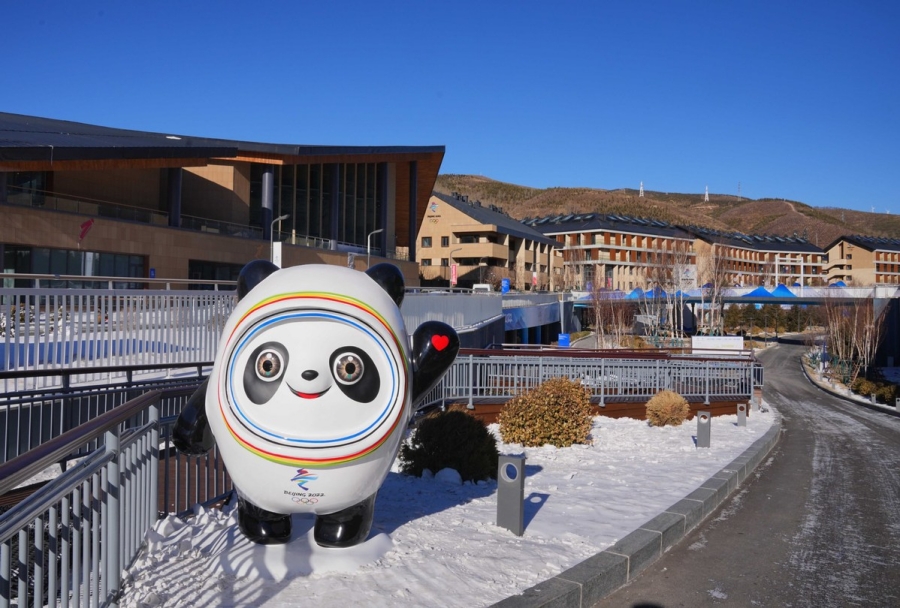Beijing Winter Games maintain new tech Olympic tradition

Beijing Winter Olympics' village in Zhangjiakou, the co-host city of 2022 Winter Olympics, is seen in this photo taken on Jan 3, 2022. [Photo/Xinhua]
Two weeks before the opening ceremony of the Beijing 2022 Winter Olympics, one new technology after another that is being used in the grand sporting event has been revealed. For example, the Wukesong Ice Sports Center utilizes carbon dioxide trans-critical direct cooling technology to make ice, which realizes a comprehensive reduction in energy consumption of more than 40 percent compared with traditional ice-making systems, while the Zhangbei flexible direct current power project means the electricity supply for the games is 100 percent "green".
A glimpse at past Olympics shows they are not only a stage for sporting prowess, but also for the latest technologies. The Stockholm Olympics in 1912 employed electronic timing for the first time. At the Tokyo Olympics in 1964, the world's first high-speed railway was launched just before the Games. So-called shark-skin swimwear made its debut at the Sydney Olympics in 2000.
In 2008, Chinese researchers enabled the torch to burn on Qomolangma amid low air pressure, low temperature, low oxygen level and strong wind, while the opening ceremony used the world's biggest full-color ground LED display.
It is fair to say that technological innovations have helped the Olympics retain their appeal, and it is equally fair to say that many of these technological innovations benefit not only the events themselves, and the athletes and audiences at the games, but also the general public. Take the 2008 Beijing Olympics for example. Data show that at least 2,000 new technologies that played major roles in the Beijing 2008 Olympics are now applied in sectors such as information technology, clean energy, and environmental protection.
The technologies being used for the upcoming Beijing 2022 Winter Olympics are expected to become just as ubiquitous. For example, weather reports with an accuracy of 100 meters and a time horizon of 100 minutes could forecast a sudden downpour. Food safety tracing technology could ensure that every apple you eat is traceable to the specific tree from which it was picked.
Wearable thermometers could help people monitor their body temperatures in a more convenient way.
The Winter Olympics allow athletes from all over the world to compete together and a worldwide audience to enjoy their performances. Technologies will make the grand events more enjoyable and will benefit ordinary people's lives long after the Games are over.
- People's Daily
























